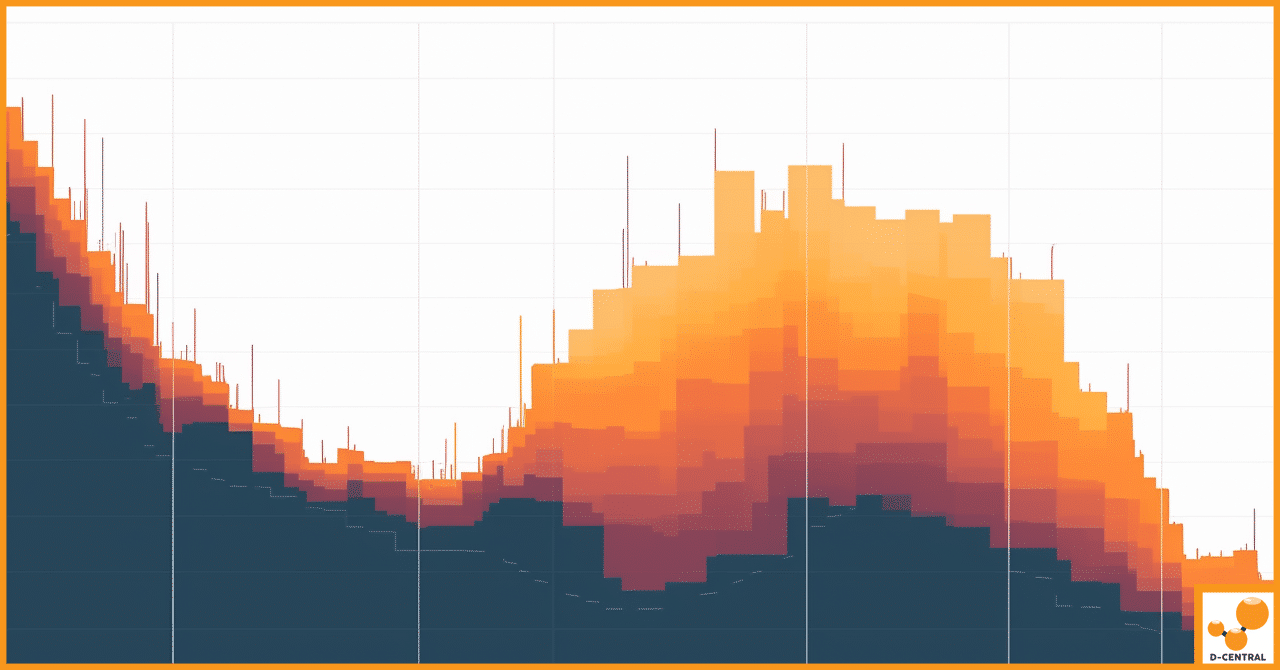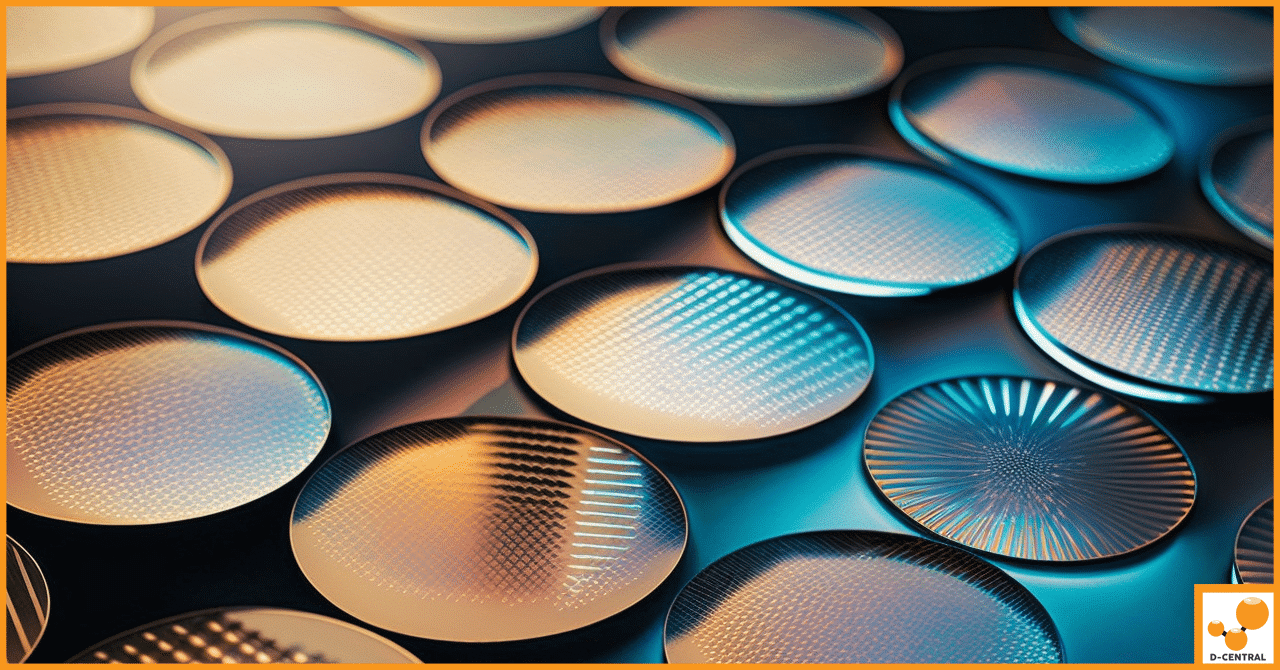
The Bitcoin Mining Dynamics Model
As the world of cryptocurrencies continues to evolve, understanding the potential future price of Bitcoin has become a topic of
4479 Desserte Nord Autoroute 440, Laval, QC H7P 6E2

In the cryptocurrency world, mining is an essential process that helps create new coins and verify transactions on the network. This process involves solving complex mathematical problems using specialized hardware called ASICs (application-specific integrated circuits). These chips are manufactured using lithography, which impacts their size and power. In this blog post, we’ll explore how advancements in lithography have improved Bitcoin mining efficiency so you can better understand its inner workings.
Bitcoin mining is an essential part of the Bitcoin network, where computers compete to solve complex mathematical problems to verify transactions and maintain the integrity of the blockchain. To do this, specialized hardware called ASICs are used, and advancements in lithography have made them smaller, more powerful, and energy-efficient.
Lithography is a manufacturing process that uses light or radiation to create patterns on silicon wafers. This determines how small and efficient ASIC chips can be produced. Improvements in lithography have allowed for the creation of ASICs with sizes ranging from 130 nanometers to 3 nanometers, enabling miners to build more efficient mining rigs.
Advancements in lithography have also enabled miners to create more specialized ASICs that can mine specific cryptocurrencies effectively and efficiently, resulting in greater customization of mining rigs. This has contributed significantly to improved efficiency in terms of both energy consumption and profitability.
Overall, advancements in lithography have helped reduce the energy requirements needed for successful Bitcoin mining while increasing profitability across the network. By enabling smaller and more powerful chips with lower power requirements, as well as greater specialization of ASICs, Bitcoin miners can operate more efficiently.
Advancements in lithography have revolutionized the way Bitcoin miners operate. With the shrinking of transistor sizes, miners can create more efficient and powerful ASICs. The smaller transistors enable chips to fit more on a single wafer, boosting computing power, mining speeds, and hash rates with lower energy consumption.
The power required for a given hashrate significantly reduces as the lithography size decreases. For instance, chips with 10 nm lithography can achieve around 38 GH/s with only 20-30 watts of power. In comparison, chips with 130 nm lithography cannot achieve the same hash rate without consuming much more electricity.
In addition to smaller transistor sizes, ASICs have become faster in processing calculations and communicating between components. Faster processors allow miners to quickly adjust their rigs in response to changes in difficulty or network conditions.
As ASIC miners become more efficient, they can reduce operating costs and increase profits. This enables them to capture larger portions of the total hashing power available across the network, which helps to improve overall network security by increasing decentralization and reducing centralization risks.
Overall, advancements in lithography have played a vital role in improving Bitcoin mining efficiency by enabling more powerful and efficient ASICs with lower energy requirements and faster switching speeds. This helps miners increase their profits while reducing overall energy consumption across the network and improving its security and decentralization levels.
Advancements in lithography have led to the development of more specialized ASICs for Bitcoin mining, resulting in improved efficiency. These specialized chips are tailored to specific algorithms or cryptocurrencies, providing two significant benefits.
Miners can reduce energy consumption by targeting specific algorithms with customized chips. They only need to run the necessary components for their desired cryptocurrency, reducing overall power draw and saving up to 20-30% in electricity costs compared to running a non-specialized ASIC.
Secondly, specialized ASICs can run algorithms faster than generic ones because of their tailored components. For instance, some ASICs are optimized for the Equihash algorithm, which is used by Zcash (ZEC) and can achieve over 400 Sol/s, while a generic chip would struggle with the same algorithm, achieving only 130 Sol/s. Specialized chips increase mining efficiency, achieving higher hash rates with less energy consumption.
Overall, advancements in lithography have enabled miners to create more specialized ASICs optimized for specific algorithms or currencies, providing greater mining efficiency than generic chips. This has helped increase profitability across the network while reducing centralization risks by providing greater opportunities for individual miners.
Advancements in lithography have allowed ASIC miners to create more specialized chips specifically designed for certain algorithms and cryptocurrencies. These improvements have reduced energy consumption, increased profit margins, improved performance rates, and greater opportunities for individual miners. Additionally, this has helped increase decentralization across the network.
Application Specific Integrated Circuits (ASICs) are electronic circuits designed for a particular function or purpose, and they can integrate individual components into a single chip. ASIC designs like smartphones, cameras, and gaming consoles can enhance electronic devices’ performance, reliability, and power efficiency. ASICs are also used in Bitcoin mining to validate transactions and create new bitcoins by solving complex mathematical problems in the SHA-256 encryption algorithm.
ASICs have improved the speed and efficiency of Bitcoin mining, outperforming CPUs, GPUs, and FPGAs. However, they have also posed challenges such as high cost, high power consumption, environmental impact, and centralization of mining power. To address these challenges, ASIC design innovations include using renewable energy sources, optimizing hardware performance, and reducing manufacturing barriers.
Overall, advancements in lithography have played a crucial role in developing specialized ASICs, leading to increased efficiency and profitability for miners and greater decentralization of the Bitcoin network.
Extreme ultraviolet (EUV) lithography is an advanced technology used in the semiconductor industry to create patterns on a silicon wafer using EUV light with a wavelength of 13.5 nm. EUV lithography offers several advantages over other techniques, including high resolution, improved accuracy, and reduced mask complexity. However, it also presents several challenges that must be addressed for successful implementation in the industry.
Generating EUV light with high power and efficiency is a significant challenge, as the efficiency of this process is low, making it challenging to generate enough EUV light to expose a wafer in a reasonable amount of time. Preventing EUV light from being absorbed by matter is also crucial, as it can reduce the intensity of the EUV light and cause imaging errors on the wafer. Reflective optics, such as mirrors and lenses, are used in EUV lithography systems. However, developing these reflective optics with multilayer coatings that can withstand the intense EUV radiation is a significant challenge.
Reducing stochastic-induced defects and finding suitable resists for EUV exposure are additional challenges. The random absorption of EUV photons causes stochastic-induced defects by the resist, which can create small variations in the pattern that are not present in the mask—finding a suitable resist that is sensitive enough to the EUV light and stable enough to withstand the intense EUV radiation.
In conclusion, EUV lithography presents several challenges that must be addressed for its successful implementation in the semiconductor industry. These challenges require significant research and development efforts from the industry and academia to advance the technology further.
Extreme Ultraviolet Lithography (EUVL) is a complex technology used in the semiconductor industry to create high-resolution patterns on computer chips. The process involves using a plasma source to emit EUV light, which is then collected and focused onto a patterned mask using a series of mirrors and lenses. The pattern on the mask is then projected onto a silicon wafer coated with a light-sensitive material, creating the desired pattern through a chemical reaction.
EUV lithography offers advantages over traditional lithography methods by creating much smaller features with excellent resolution and reducing the required process steps. This leads to increased productivity and reduced costs. However, EUV lithography is a challenging and expensive technology that requires specialized materials and equipment and a high degree of precision and control.
Precision optics, such as curved mirrors, play a crucial role in EUV lithography by reflecting EUV light and creating delicate structures on the wafer through an optical mask. The mirrors are made of multilayer coatings of materials such as molybdenum and silicon with high reflectance at 13.5nm wavelength. The mirrors are deposited on super-polished substrates, such as single-crystal silicon, with very low surface roughness. Depending on the application, they can have different shapes, such as flat or spherical.
Despite the challenges and costs, EUV lithography is considered a crucial technology for the semiconductor industry. It is expected to be increasingly important in producing advanced electronic devices.
Advances in lithography technology have significantly improved the efficiency of Bitcoin mining. Still, they also present many challenges that must be addressed for EUV lithography to become viable. With research and development from industry and academia, these obstacles can eventually be overcome and will help make Bitcoin mining more efficient than ever before. Implementing EUV Lithography could revolutionize how we mine cryptocurrencies like Bitcoin, making it faster, more accessible and more cost-effective for miners worldwide.
What is the relationship between lithography and Bitcoin mining?
Lithography technology plays a crucial role in improving the efficiency of Bitcoin mining by enabling the production of smaller, more powerful, and energy-efficient ASIC chips.
What is an ASIC?
ASIC stands for Application-Specific Integrated Circuit. It is specialized hardware designed specifically for a particular function, such as Bitcoin mining.
How do advancements in lithography improve Bitcoin mining efficiency?
Advancements in lithography have led to the creation of smaller transistor sizes, allowing for more efficient and powerful ASIC chips. These smaller chips consume less energy while providing higher computing power and hash rates.
How have specialized ASICs improved Bitcoin mining?
Advancements in lithography have enabled the development of more specialized ASICs optimized for specific algorithms or cryptocurrencies. This customization reduces energy consumption and increases mining efficiency, leading to higher hash rates and greater profitability.
What challenges does EUV lithography face?
Extreme ultraviolet (EUV) lithography faces challenges such as generating high-power and efficient EUV light, developing reflective optics that can withstand intense EUV radiation, reducing stochastic-induced defects, and finding suitable resists for EUV exposure.
What is the role of precision optics in EUV lithography?
Precision optics, such as curved mirrors, play a crucial role in EUV lithography by reflecting EUV light and creating delicate structures on the wafer through an optical mask.
DISCLAIMER: D-Central Technologies and its associated content, including this blog, do not serve as financial advisors or official investment advisors. The insights and opinions shared here or by any guests featured in our content are provided purely for informational and educational purposes. Such communications should not be interpreted as financial, investment, legal, tax, or any form of specific advice. We are committed to advancing the knowledge and understanding of Bitcoin and its potential impact on society. However, we urge our community to proceed with caution and informed judgment in all related endeavors.
Related Posts

As the world of cryptocurrencies continues to evolve, understanding the potential future price of Bitcoin has become a topic of

In the digital age, Bitcoin has emerged as a revolutionary financial instrument, reshaping our understanding of currency, transactions, and financial

In the realm of digital currencies, Bitcoin stands as a colossus, not just in its monetary value but also in